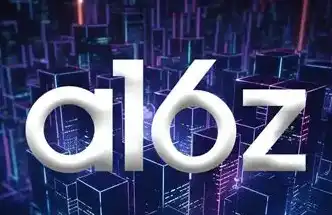The cryptocurrency world is constantly evolving, with innovations promising to reshape how we transact and interact with digital assets. Among the most exciting developments is the ongoing evolution of the Lightning Network, Bitcoin’s powerful layer-2 solution. Imagine a future where billions of dollars in stablecoin transactions flow through this network, not just Bitcoin. This isn’t a distant dream; it’s a bold prediction from a leading industry expert. Graham Krizek, CEO of Lightning payments provider Voltage, recently shared a fascinating vision with Cointelegraph: he believes the Lightning Network could astonishingly handle 5% of global stablecoin volume by 2028. This forecast signals a monumental shift, potentially making digital currency transactions faster, cheaper, and more accessible than ever before.
The Lightning Network Explained: A Game-Changer for Transactions
At its core, the Lightning Network is a “layer-2” payment protocol built on top of the Bitcoin blockchain. Think of it as a superhighway constructed over a regular road. While Bitcoin’s main chain (the “road”) is incredibly secure and decentralized, it can sometimes be slow and costly for small, frequent transactions. The Lightning Network addresses these limitations by creating off-chain payment channels between users. This allows for:
- Instant Transactions: Payments settle almost immediately.
- Micro-payments: Extremely small amounts can be sent with negligible fees.
- Scalability: It can handle millions of transactions per second, far exceeding the main Bitcoin chain’s capacity.
Historically, the Lightning Network has been primarily used for Bitcoin (BTC) transactions. However, the vision now extends to stablecoins. Stablecoins are cryptocurrencies designed to maintain a stable value, typically pegged to fiat currencies like the US dollar (e.g., USDT, USDC). They combine the stability of traditional money with the advantages of blockchain technology. Integrating stablecoins with the Lightning Network could unlock unprecedented utility, merging the speed and low cost of Lightning with the price stability of fiat-pegged assets.
Krizek’s Bold Forecast: Can Lightning Network Truly Capture 5% of Stablecoin Volume?
Voltage CEO Graham Krizek’s prediction of the Lightning Network handling 5% of stablecoin volume by 2028 is a testament to the network’s burgeoning potential. To put this into perspective, the global stablecoin market capitalization currently hovers around hundreds of billions of dollars, with daily transaction volumes often exceeding that. A 5% share would represent a significant flow of capital, transforming the landscape of digital payments. Krizek’s optimism stems from several key factors:
- Growing Demand for Efficient Payments: Businesses and individuals worldwide seek faster, cheaper, and more reliable ways to send and receive money, especially across borders.
- Technological Advancements: Innovations like Taro (Taproot Asset Representation Overlay), developed by Lightning Labs, are making it technically feasible to issue and transfer stablecoins (and other assets) directly over the Lightning Network. These underlying technologies are paving the way for major stablecoins like USDT and USDC.
- Increasing Adoption of Bitcoin Layer-2: As more users and businesses embrace Bitcoin’s layer-2 solutions, the infrastructure and user base for stablecoin integration naturally expand.
- Emerging Regulatory Clarity: Clearer regulatory frameworks for stablecoins could bolster confidence and encourage wider institutional adoption, potentially leveraging Lightning for efficiency.
Krizek anticipates a noticeable pickup in stablecoin activity on the network in the coming months, suggesting that the foundational work is already underway.
Unlocking Potential: The Immense Benefits of Stablecoins on the Lightning Network
The convergence of stablecoins and the Lightning Network offers a compelling suite of advantages that could revolutionize various financial activities. Imagine a world where:
| Unparalleled Speed | Transactions settle in milliseconds, ideal for retail payments, online gaming, and real-time settlements. |
| Near-Zero Fees | Lightning fees are minuscule, often fractions of a cent, enabling efficient micro-transactions. |
| Global Reach & Accessibility | Anyone with an internet connection can send and receive stablecoins instantly, bypassing geographical barriers and banking hours. |
| Enhanced Privacy | Off-chain transactions offer a degree of privacy compared to on-chain transactions. |
| Censorship Resistance | Built on Bitcoin’s decentralized foundation, transactions are resistant to censorship or arbitrary freezing by central authorities. |
These benefits collectively paint a picture of a more efficient, inclusive, and user-friendly financial system, especially for use cases like cross-border payments, e-commerce, and payroll for global teams.
Navigating the Path: What Challenges Does Lightning Network Face?
While the potential is immense, the journey to 5% stablecoin volume by 2028 is not without its obstacles. The Lightning Network, despite its advancements, still faces certain challenges:
- User Experience (UX): While improving, setting up and managing Lightning channels can still be complex for average users. Wallet interfaces need to become even more intuitive.
- Liquidity Management: For large-scale transactions, ensuring sufficient liquidity within payment channels across the network is crucial. This requires sophisticated routing and channel management.
- Wider Developer Adoption: More developers and businesses need to integrate Lightning into their applications and services to drive widespread adoption.
- Regulatory Clarity for Stablecoins: The global regulatory landscape for stablecoins is still evolving. Clear and favorable regulations are essential for institutional confidence and mainstream integration.
- Native Stablecoin Issuance: The direct issuance of major stablecoins like USDT and USDC on the Lightning Network via protocols like Taro is a critical step that needs to fully materialize and gain traction.
Overcoming these hurdles will require continued innovation, collaboration across the crypto ecosystem, and dedicated efforts to educate users and businesses about the benefits and ease of use.
Real-World Applications: Where Lightning Network Stablecoins Will Shine?
If Krizek’s prediction holds true, the impact of Lightning Network-powered stablecoins could be profound, touching various sectors:
- Global Remittances: Sending money to family across continents for virtually no cost and instant settlement, bypassing traditional expensive and slow wire transfers.
- E-commerce & Retail: Online stores and physical retailers could accept stablecoin payments instantly, avoiding credit card processing fees and chargebacks.
- Payroll & Freelance Payments: Companies could pay global remote workers or freelancers in stablecoins, reducing transfer costs and speeding up payment cycles.
- Gaming & Micro-transactions: In-game purchases, tipping content creators, or paying for small digital services could become seamless and cost-effective.
The potential applications are vast, promising to make digital payments more efficient and inclusive for billions worldwide.
The Future is Bright: Concluding Thoughts on the Lightning Network’s Trajectory
The journey for the Lightning Network to achieve a 5% share of stablecoin volume by 2028 is ambitious but increasingly plausible. It hinges on the continued development of robust infrastructure, the seamless integration of major stablecoins, and a concerted effort to simplify the user experience. As the demand for efficient, low-cost, and borderless digital payments grows, the unique capabilities of the Lightning Network position it as a formidable contender in the evolving financial landscape. Graham Krizek’s vision isn’t just about a percentage; it’s about a fundamental shift in how we perceive and utilize digital money, making it truly accessible and efficient for everyone.
In conclusion, the prospect of the Lightning Network handling a significant portion of global stablecoin volume represents an exciting frontier for cryptocurrency. It signifies a future where the speed and efficiency of Bitcoin’s layer-2 solution merge with the stability of fiat-pegged digital assets, creating a powerful synergy. While challenges remain, the rapid pace of innovation and growing industry interest suggest that Krizek’s prediction might just be the spark that ignites a new era of mainstream stablecoin adoption on the Lightning Network.
Frequently Asked Questions About the Lightning Network and Stablecoins
- What is the Lightning Network?
The Lightning Network is a “layer-2” payment protocol built on top of the Bitcoin blockchain, enabling instant, low-cost, and high-volume transactions by creating off-chain payment channels to enhance Bitcoin’s scalability. - Why are stablecoins important for the Lightning Network?
Stablecoins offer price stability, making them ideal for everyday transactions. Integrating them with the Lightning Network combines this stability with Lightning’s speed and low fees, creating an efficient digital payment system. - What are the main benefits of using stablecoins on LN?
Key benefits include near-instant transaction settlement, extremely low fees, enhanced privacy for off-chain transactions, global accessibility, and censorship resistance, making it suitable for micro-payments and cross-border transfers. - Are major stablecoins like USDT and USDC currently available natively on the Lightning Network?
While not yet broadly available, technologies like Taro (Taproot Asset Representation Overlay) are being developed by Lightning Labs to enable the issuance and transfer of stablecoins and other assets directly over the network. This is a critical step for future adoption. - What challenges does the Lightning Network face in achieving widespread stablecoin adoption?
Challenges include improving user experience, ensuring sufficient network liquidity, driving broader developer and business integration, and navigating the evolving global regulatory landscape for stablecoins.
If you found this article insightful, consider sharing it with your network! Help us spread the word about the transformative potential of the Lightning Network and stablecoins in shaping the future of digital finance.
To learn more about the latest crypto market trends, explore our article on key developments shaping Bitcoin institutional adoption .




